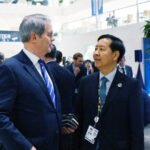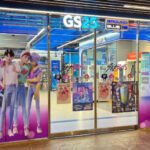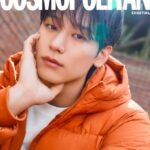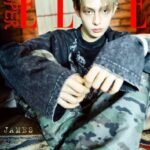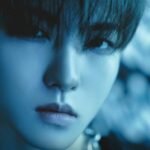Ontario Premier Doug Ford (from left), Canadian Prime Minister Justin Trudeau and Canadian Finance Minister Chrystia Freeland look on as Honda CEO Toshihiro Mibe speaks at an event announcing an $11 billion investment plan in Alliston, Ontario on April 25, 2024. Honda is set to build a battery materials plant with POSCO Future M there (Courtesy of Honda)
Japan’s Honda Motor Co. and South Korea’s POSCO Future M Co. agreed to build a battery materials plant in Canada where the automaker will invest $11 billion in an electric vehicle value chain, centering on an EV production complex to meet US requirements for clean cars’ federal tax benefits.
Honda on Thursday said it will set up a cathode active material and precursor processing plant through a joint venture partnership with POSCO Future M as a part of the carmaker’s EV comprehensive value chain plan to meet increasing EV demand on the continent.
POSCO Future M on Friday said the two companies inked a memorandum of understanding to establish a factory for cathodes, which will be supplied to Honda’s EV batteries produced in North America. So far neither POSCO Future M nor Honda have provided further details of the plant such as financial values.
“The two companies agreed to set up a stable supply network by locally manufacturing cathodes, core materials for batteries’ performance and costs, to secure a competitive edge in the rapidly growing North American EV market,” POSCO Future M said in a statement.
The battery materials unit of South Korean steel giant POSCO Group said it is expected to expand its foothold in North America since Honda aims to increase EV production volumes in North America, the world’s third-largest EV market, to more than 2 million units by 2030.
In April last year, POSCO Group and Honda agreed to extend their cooperation from the existing steel business to batteries and other EV-related sectors.
(Courtesy of POSCO Future M)
POSCO Future M, formerly POSCO Chemical Co., is building a joint venture factory with US top automaker General Motors Co. in Bécancour, Quebec to produce the active material for cathodes. The plant will be completed in the second half.
The US grants customers up to $7,500 per EV if the eco-friendly vehicle is assembled in North America and the battery’s minerals are either mined or processed in the country or one of its free trade partners.
Washington requires not to use certain battery materials procured from foreign entities of concern (FEOCs) — notably businesses significantly influenced by China – for the benefit.
HONDA TO INVEST $11 BILLION IN CANADA
Honda announced a plan to spend C$15 billion ($11 billion), including investment by joint venture partners, to create a comprehensive EV value chain in Canada to prepare for an uptick in demand for the clean cars on the continent.
“We will strengthen our EV supply system and capability with an eye toward a future increase in EV demand in North America,” said Honda CEO Toshihiro Mibe.
The maker of the Prologue, a long-range EV for North America, expected the complex in Alliston, Ontario, to start commercial operations in 2028, manufacturing 240,000 EVs and 36 gigawatt hours (GWh) a year.
In 2022, Honda unveiled a plan to invest $700 million to transform its auto production plants in the US state of Ohio into its EV hub in North America.
The automaker joined hands with South Korean LG Energy Solution Ltd., the world’s No. 3 battery maker to build a cell factory there with an investment of $4.4 billion.
By Sang Hoon Sung
uphoon@hankyung.com
Jongwoo Cheon edited this article.


